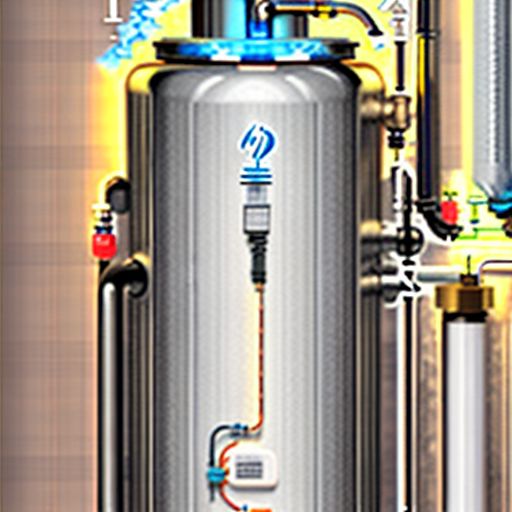Imagine this: you’re looking forward to a hot shower after a long day, but when you turn on the faucet, all you get is cold water. Frustrating, right? If you’re experiencing “No Hot Water In House But Have Cold Water Electric,” you’re not alone. This is a common plumbing problem, and luckily, there are several things you can check yourself before calling in a professional plumber.
Understanding the Problem: No Hot Water, But Cold Water Works
Let’s break down this problem. The fact that you have cold water running means your water supply is fine. The issue lies specifically with your electric water heater’s ability to heat the water.
Why is My Electric Water Heater Not Heating Water?
Several culprits could be behind this issue, ranging from simple fixes to more complex problems:
- Tripped Circuit Breaker: Electric water heaters require a dedicated circuit. If the breaker trips, your heater won’t receive power.
- Faulty Thermostat: The thermostat regulates the water heater’s temperature. A malfunctioning thermostat could be the reason for no hot water.
- Heating Element Issues: The heating element is responsible for actually heating the water. Over time, it can burn out and need replacement.
- Loose Wiring: Electrical connections within the water heater can loosen, disrupting the flow of electricity.
- Water Heater Age: Water heaters have a lifespan, usually around 8-12 years. An old unit might be nearing the end of its life.
electricity.catcarejp.com/wp-content/uploads/2024/07/electric-water-heater-components-669a28.jpg" alt="Electric Water Heater Components Diagram" width="512" height="512">Electric Water Heater Components Diagram
Troubleshooting Your Electric Water Heater
Before you attempt any DIY troubleshooting, turn off the power to your water heater at the circuit breaker for safety.
1. Check the Circuit Breaker
Locate your electrical panel and find the breaker labeled for your water heater. If it’s tripped, switch it off completely and then back on.
Did that solve the problem?
- Yes: You likely had a temporary power surge.
- No: Move on to the next step.
2. Inspect the Thermostat
The thermostat is usually located behind a panel on the water heater. Carefully remove the panel.
- Is the thermostat set correctly? It should be set around 120°F (49°C) for optimal performance and energy efficiency.
- Is the thermostat displaying an error code? Consult your water heater’s manual for code interpretation and troubleshooting steps.
If the thermostat seems faulty, you might need to replace it. This is a job best left to a qualified electrician.
3. Consider Calling a Plumber
If you’ve gone through these steps and you’re still facing “no hot water in house but have cold water electric” issues, it’s time to call a licensed plumber. They have the expertise to diagnose and fix more complex problems like faulty heating elements or wiring issues.
Preventing Future Hot Water Problems
Here are some tips to keep your electric water heater running smoothly:
- Annual Maintenance: Flush your water heater tank annually to remove sediment buildup, which can reduce efficiency and lifespan.
- Test the Pressure Relief Valve: This valve prevents dangerous pressure buildup. Test it annually to ensure it’s working correctly.
- Know Your Water Heater’s Age: If your unit is nearing the end of its lifespan, consider replacing it before it fails completely.
By understanding the common causes of “no hot water in house but have cold water electric” issues and following these troubleshooting and preventative tips, you can keep your hot water flowing for years to come.
